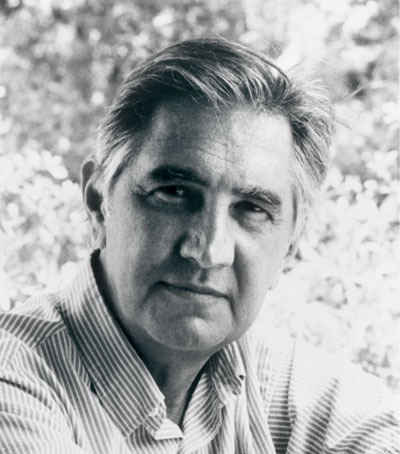A Signature Style: Picture book author Byron Barton on developing his craft | Up Close
 The iconic colors and shapes of Byron Barton’s picture books and board books are staples in libraries and early learning environments. From trucks and buses to dinosaurs and astronauts—and now several interactive apps—Barton has been creating engaging stories for the youngest learners for 45 years. His latest picture book, My Bus (HarperCollins, 2014), which recently earned an SLJ Star, features his signature bright, bold illustrations with a bevy of simple concepts perfect for the growing minds of toddlers and preschoolers. SLJ caught up with the prolific author to chat about his art, his influences, and his unique ability to create books that inspire pre-readers and readers alike.
The iconic colors and shapes of Byron Barton’s picture books and board books are staples in libraries and early learning environments. From trucks and buses to dinosaurs and astronauts—and now several interactive apps—Barton has been creating engaging stories for the youngest learners for 45 years. His latest picture book, My Bus (HarperCollins, 2014), which recently earned an SLJ Star, features his signature bright, bold illustrations with a bevy of simple concepts perfect for the growing minds of toddlers and preschoolers. SLJ caught up with the prolific author to chat about his art, his influences, and his unique ability to create books that inspire pre-readers and readers alike.
My very first memory of creating art was in kindergarten. I was criticized for not keeping the crayon colors inside the black line. I was a little hurt. But it was the encouragement from my art teacher Mrs. Reeves, at John Marshall High School, that made me want to go on with art.
How did you come to be a picture book artist? I was leaning in that direction when I met my now-former wife, Harriett. She was a student studying book illustration, and I was at CBS. It was her love for and knowledge of picture books that I learned from and that moved me all the way to doing picture books. How did you develop your style?
How did you develop your style? I like the way children draw. I have always wanted to make a book with that kind of freedom and expression. But I also want my books to communicate. So the subject matter has a big influence on how I draw. It is a struggle between making a free, expressive kind of drawing and a drawing made to communicate. And then the computer came along, and I am adapting to that. So I am still working at putting it all together.
Many of your picture books have been described as nonfiction for the very young. How do you decide what information to include and what to leave out?I go for what is most basic and can be made interesting and useful to a kid. I want the book to be not just informational but also to move like a story with a beginning and an end. So I put in those things I need to move the story along, and I leave out what gets in the way.
Creators of books for older children and teens often get feedback from their readers. But many of your biggest fans can’t talk yet. How do you know what they like?Well, when I work, I try to excite that part of me that is still a kid. I look at a subject, and become fascinated, and see it for the first time as a kid might. I become both an adult and a kid—some analyzing, some discipline, and lots and lots of enthusiasm. Needs and tastes change. Kids are all different. You have just got to feel it.
There are now several Byron Barton apps. Have you been involved in the creation/transition to digital? It’s exciting to think of the possibilities of what can be done in picture books with the help of digital technology. I did once illustrate and make an interactive CD-ROM to go with Sarah Weeks’s book Little Factory (HarperCollins, 1998). Maybe as the technology develops, it will become easier for artists and publishers to make and publish books that way. Of course, it’s probably happening, and I just don’t know about it. It all moves so fast. Who has most influenced your work? There are so many great artists and books that I admire. I like all styles. I see someone I like and say, “I wish I could do that.” I don’t know if I can say that there are some I have studied and been more influenced by. Probably I pick up on things here and there, and use them unaware. Harriett has been a very, very big influence on me. I learned all I know about children’s books through her.RELATED
The job outlook in 2030: Librarians will be in demand
The job outlook in 2030: Librarians will be in demand
ALREADY A SUBSCRIBER? LOG IN
We are currently offering this content for free. Sign up now to activate your personal profile, where you can save articles for future viewing






Add Comment :-
Be the first reader to comment.
Comment Policy:
Comment should not be empty !!!